Chapter 2: Genres & Subgenres — Part 1 (Fantasy)
Imagine walking into the grandest library of the universe — a place where every book hums with energy, where stories shimmer like stardust on ancient scrolls and glimmering e-readers. This isn’t just a metaphor — it’s your inner creative archive. And on its infinite shelves, every story falls somewhere. This is where genres and subgenres come in. They are your compass and map, helping both writer and reader navigate this boundless sea of tales. Think of genres as literary planets, each with its own gravitational pull, its own native language of expectation, mood, and rhythm.
What Is a Genre, Anyway?
Genre is more than a bookshelf label; it’s a quiet handshake between writer and reader, a whispered agreement: “If you pick this story, here’s the emotional ride I’m promising you.” If your book wears the badge of “mystery,” readers expect puzzles, secrets, red herrings, and that delicious moment of truth where all the shadows lift. If you promise “romance,” there better be sparks — whether they’re slow-burning or explosive — heartbreaks, breakthroughs, and maybe one last kiss in the rain that makes even the sky weep with joy.
Genres are about emotional choreography. Horror prepares us for dread and catharsis. Fantasy invites us into wonder and awe. Science fiction stretches our imagination like cosmic elastic bands. And literary fiction? It dares to poke the rawest part of our hearts and say, “Feel this with me.”
But don’t confuse genre with a creative cage. It’s more like a skeleton — firm, functional, but flexible. The story hangs on it, but how it walks, how it dances, how it bleeds or blooms — that’s entirely up to you. You can write a fantasy that reads like noir, or a sci-fi love story disguised as an existential mystery. Genre is the scaffolding. You bring the soul.
Fantasy — Where Imagination Sets the Physics
Fantasy is not merely a genre. It is a jurisdiction of wonder, governed by the laws of imagination and policed by dragons, oracles, and the occasional shadow-consuming deity. This is the realm where metaphors stretch their legs and take on physical form, where belief becomes currency, and where the boundaries of possibility are not just pushed—they’re rewritten entirely. At its core, fantasy is the art of making the impossible feel inevitable. Whether you’re tracing the linguistic roots of Tolkien’s Quenya, navigating the interdimensional grief-scapes of N.K. Jemisin, or sword-sparring in a grimdark alleyway crafted by Joe Abercrombie, you are not merely worldbuilding—you are soulcrafting.
Fantasy thrives because it allows us to reimagine reality with the gloves off. Power isn’t just political—it’s magical. Identity isn’t fixed—it’s transfigurable. And conflict isn’t just social—it’s often apocalyptic. Modern fantasy has evolved into dozens of subdomains: epic, urban, high, low, dark, cozy, portal, progression, and now even romantasy—each with its own metaphysical rulebook. But no matter the style, one truth remains: the world must feel lived in. Magic systems demand structure, not just sparkle. The economy of your elven kingdom must feel as real as the emotions driving your warlock protagonist. Readers may arrive for the swordplay or spellcraft, but they stay for the resonances: how fantasy uses impossible stakes to reveal painfully familiar truths. That’s why this genre isn’t an escape—it’s a return, through the wardrobe, into what it means to hope.
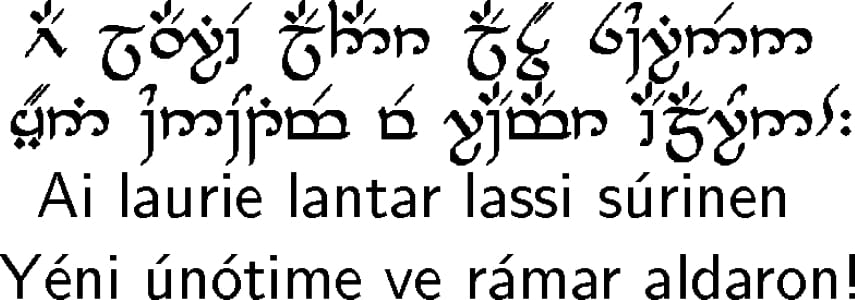
Fairy Tale & Mythic Fantasy: Timeless Bones Beneath New Skin
Fairy Tale and Mythic Fantasy are the oldest bones of storytelling — tales whispered by firelight, sung through generations, soaked in archetype and ancient rhythm. But don’t mistake age for simplicity. These subgenres breathe through metaphor and metamorphosis, cloaking primal truths in fantastical skins. Whether it’s a modern retelling of Cinderella where the slipper doesn’t fit anymore, or an original fable told in the cadence of the Brothers Grimm, these stories hold mirrors to our collective subconscious. Think of Naomi Novik’s Uprooted, which feels like it was carved from old forest bark, or Madeline Miller’s Circe, where a mythic sorceress finally speaks for herself across centuries of silence.
At the heart of these tales are transformation and consequence. The forest isn’t just a setting — it’s a spiritual crucible. The witch isn’t always evil — sometimes she’s the only one telling the truth. And wishes? They always come at a cost. Writers who step into this realm must learn the language of symbols and the logic of dreams. Everything in a fairy tale carries weight: the color of a ribbon, the number three, the repetition of a phrase. This is storytelling where brevity doesn’t mean shallowness — it means distillation.
To write Mythic Fantasy is to inherit a sacred burden. You are not inventing — you are remembering. Your job is to speak the old stories in a new voice, to light the lanterns that lead us out of the woods, even if your version is more haunted than hopeful.
Historical Fantasy: Where Magic Resurrects Memory
Historical Fantasy doesn’t just play dress-up in powdered wigs and togas — it fuses the rigor of research with the reverence of the unreal. Here, the past is both record and reckoning, re-enchanted by threads of sorcery and myth. Imagine a Byzantine Empire ruled by necromancers. Or Mughal India where djinn whisper in court intrigue. Guy Gavriel Kay’s works — such as Under Heaven and The Lions of Al-Rassan — reshape real-world epochs with delicate grace, adding just enough magic to cast new light on the old world.
What makes this subgenre powerful is its ability to challenge the “official” version of history. It’s an act of reclamation. You can spotlight untold voices, remix timelines, or expose injustice with the alchemy of fantasy. Magic in these stories often feels ancient and heavy, rooted in blood, ritual, or forgotten gods. The tension between historical fact and fictional wonder creates a resonance that pure secondary worlds can’t quite mimic — because the reader recognizes the bones beneath the enchantment.
Writers must respect the past — not replicate it uncritically. Do your research. Know what your world lost, what it celebrated, and what it tried to erase. Then reimagine it. Bend history like a blacksmith bends iron: with heat, force, and vision.
Sword & Sorcery: Pulse-Pounding, Grit-Stained Glory
Sword & Sorcery is the rock ‘n’ roll of fantasy — visceral, loud, and dripping with kinetic energy. These tales favor action over introspection, the clash of steel over the weight of prophecy. It’s a subgenre forged in pulpy pages and smoky taverns, where mercenaries, thieves, and wandering warlocks chase coin, glory, or vengeance through crumbling ruins. Think of Robert E. Howard’s Conan the Barbarian, where brawn and cunning navigate a brutal world, or Michael Moorcock’s Elric of Melniboné, whose pale sorcerer prince slashes his way through existential despair with a soul-drinking sword.
But don’t let the bloodstains fool you — Sword & Sorcery is also deeply poetic when done right. The environments drip with mythic atmosphere. The characters are often tragic antiheroes, walking contradictions who carry pain like a second blade. What separates it from Grimdark is its tempo: it moves fast, hits hard, and rarely lingers unless it’s over a flask of something dangerous.
Writers should embrace vivid action and tight pacing. Treat the sword fights as character development. Let the magic be wild and unpredictable — sorcery in this subgenre is less about law and more about risk. And above all, keep the stakes personal. These aren’t stories about saving the world. They’re stories about surviving it.
Epic Fantasy: The Cosmic Orchestra
While often conflated with High Fantasy, Epic Fantasy is less about setting and more about scope. It is ambition incarnate — a genre where destinies span empires, timelines cross generations, and characters carry the weight of worlds. This is where plotlines bloom into constellations, where the fate of the many rests on the sacrifices of the few. Think of Robert Jordan’s Wheel of Time, Steven Erikson’s Malazan Book of the Fallen, or even The Broken Earth trilogy by N.K. Jemisin, where planetary trauma becomes a metaphor for societal collapse.
Epic Fantasy is emotional maximalism. It dares to be grand — in structure, in theme, in character evolution. You’re not just telling a story; you’re composing a mythos. There’s politics, theology, philosophy, war, love, and everything in between. And yet, the best epics never lose sight of the human pulse at the center — the lone mage grieving her lover while marching toward apocalypse; the orphan prince who doubts every step he takes toward the crown.
To write Epic Fantasy is to orchestrate a cosmos. Map out the continents, yes — but map out the hearts too. Keep your narrative tempo varied: build slow, explode suddenly, and allow silence to echo when needed. And be brave enough to finish the symphony — whether in triumph or tragedy.
Magical Realism: Reality with Veins of the Fantastic
Magical Realism is not fantasy wearing a realist mask — it’s its own beast entirely. Born from Latin American literature and shaped by the likes of Gabriel García Márquez and Isabel Allende, Magical Realism treats the extraordinary as mundane and the mundane as sacred. A woman may cry so much she floods a village. Ghosts sit beside the living at dinner. The miraculous happens without fanfare — because in this genre, reality and the unreal coexist without contradiction.
The key here is tone. There’s no shock when magic appears; instead, there’s a deep emotional logic. The surreal often acts as a metaphor for cultural memory, trauma, resilience, or desire. Writers like Haruki Murakami and Salman Rushdie infuse everyday life with symbolic magic, revealing invisible patterns beneath the surface of normalcy.
For writers, Magical Realism demands restraint. You’re not building a magic system — you’re threading dream logic into lived experience. Let the metaphor be primary. Use surreal imagery to unveil psychological truths or critique oppressive systems. And most of all, respect the cultural roots of this genre. It is deeply political, spiritual, and intimate — and should never be treated like a style to mimic, but a lens to honor.
Paranormal Fantasy: Love, Death, and the Undead in Suburbia
Paranormal Fantasy is the genre of hauntings and heartbeats. Vampires, werewolves, ghosts, and demons aren’t just monsters here — they’re love interests, rivals, family secrets, or that mysterious neighbor with the glowing eyes. Whether set in small towns or sprawling cities, this subgenre thrives on emotional immediacy and romantic tension. Think of Charlaine Harris’s Sookie Stackhouse series or Patricia Briggs’s Mercy Thompson books — stories that blend the supernatural with sex, humor, danger, and domestic drama.
At its best, Paranormal Fantasy is a collision of desire and danger. It often leans into tropes from Romance, Horror, and Mystery — resulting in books that move fast, bite hard, and leave lingering scars. There’s an intimacy to these stories. The stakes are often personal — protecting your family, uncovering a magical inheritance, resisting a forbidden attraction.
Writers should treat monsters like mirrors. What does the vampire represent? Hunger? Loneliness? Immortality as curse? Let the paranormal highlight very human fears and desires. And don’t skimp on worldbuilding just because the setting is familiar — a pack hierarchy or necromantic cult deserves as much lore as a royal court. Because in Paranormal Fantasy, the monsters are only as interesting as what they reveal about us.
Grimdark Fantasy: Where Hope is a Lie and Morality Bleeds
Grimdark isn’t just about gore or gloom — it’s about the collapse of comforting illusions. This subgenre strips fantasy of its chivalric polish and plunges it into a world where idealism is weakness, virtue is transactional, and power corrodes everything it touches. The rain never stops falling here, and if it does, it only reveals the blood on the streets. Think A Song of Ice and Fire by George R.R. Martin or Joe Abercrombie’s First Law trilogy — stories where every alliance has a dagger beneath it and heroes are just villains with better press.
Grimdark characters are often morally compromised — assassins, traitors, broken kings — people who fight not for justice, but survival. But the best Grimdark doesn’t just wallow in despair; it uses its bleakness as interrogation. What happens when systems fail? When gods are silent? When justice is just a prettier word for revenge?
To write Grimdark is to carve beauty from rust. Your prose should drip with atmosphere. Your world must be textured with decay and contradiction — cities built on mass graves, empires won by genocidal magic. Let your readers question what victory even means. And if hope appears, let it be hard-earned, bruised, and fragile as a candle in wind.
Urban Fantasy: Magic in the Cracks of Concrete
Urban Fantasy is where the spellbook meets the subway, where angels smoke cigarettes on rooftops and sorcerers run tattoo parlors. It’s a genre defined not by setting, but by intersection — where myth bleeds into the modern world and ancient creatures walk among skyscrapers and streetlights. Think The Dresden Files by Jim Butcher or Neverwhere by Neil Gaiman. These aren’t just tales of magic — they’re tales of hidden infrastructure: the ghosts in the plumbing, the fae under the freeway.
This subgenre thrives on contrasts. Technology hums alongside enchantment. Smartphones coexist with spellcasting. The city is alive — snarling, shifting, enchanted — and it either tolerates your magic or hunts it down. The protagonists are often reluctant protectors, loners with hexes in their pockets and trauma behind their eyes.
To write Urban Fantasy, you must make the modern mythic. Let alleyways become labyrinths. Turn parking garages into demon dens. Build your magical system like an underground economy — strange, illegal, and invisible to those who choose not to see. And don’t shy away from social commentary. The best Urban Fantasy uses the uncanny to reflect on race, class, identity, and power in real-world cities that already feel enchanted in their chaos.
Dark Fantasy: Where Horror Wraps Itself in Spellcraft
Dark Fantasy lives in the shadowy borderlands between wonder and nightmare. It is the genre where magic doesn’t save — it devours. Where gods lie, heroes fall, and every spell cast leaves a mark on the soul. Think Clive Barker’s Weaveworld, or The Poppy War by R.F. Kuang, where horror is woven into the very fabric of myth and history. If High Fantasy is the bright cathedral of the genre, Dark Fantasy is its haunted crypt.
What defines this subgenre isn’t just mood — it’s consequence. The supernatural is seductive, but also corruptive. Violence matters. Death lingers. Your characters might start with noble intentions, but the deeper they delve into forbidden knowledge or cursed bloodlines, the more the genre reveals its teeth. Morality becomes a fog. The world doesn’t end — it withers, slowly.
Writing Dark Fantasy demands mastery of tone. Your prose should ache with dread. Use sensory language that unsettles — rusted iron, ash, rotting silk. Populate your world with monsters both literal and metaphorical. Let the horror rise not just from external threats, but internal rot — the slow unraveling of what your characters thought they could endure. And remember: darkness is not the absence of light, but its distortion.
Wuxia & Xianxia Fantasy: Spiritual Swords and Immortal Quests
Drawn from Chinese literary and mythic traditions, Wuxia and Xianxia are not just subgenres — they are entire cosmologies. Wuxia (literally “martial heroes”) focuses on wandering warriors in a mythical China, guided by personal codes of honor and martial mastery. Think of it as swordplay laced with philosophy — a genre where style and soul are entwined. Xianxia (literally “immortal heroes”) takes it further, blending Daoist alchemy, cultivation of spiritual energy (qi), and epic journeys toward immortality.
These genres are about growth — internal and external. The path of cultivation is often lonely and steep, filled with demonic trials, treacherous sects, ancient artifacts, and forbidden techniques. Protagonists rise through tiers of power, not unlike leveling up in a game, but the journey is often fraught with betrayal, cosmic consequence, and karmic weight. Popular modern examples include novels like Coiling Dragon or I Shall Seal the Heavens, which have inspired an entire wave of Web Novels and cultivation sagas.
To write in these subgenres, one must respect their cultural roots. The martial arts aren’t mere choreography — they’re expressions of will and spirit. The world itself is layered: physical, spiritual, celestial. Let your world breathe with sacred mountains, heavenly realms, qi rivers, and soul-forging trials. And understand the heart of it: transcendence, discipline, revenge, and balance.
Portal Fantasy: Doorways to the Self
Portal Fantasy is about crossing thresholds — literally and metaphorically. A wardrobe. A rabbit hole. A mirror. A key. The genre lives in the moment of transport, where a mundane life is shattered by the discovery of another world. C.S. Lewis’s Narnia, Seanan McGuire’s Wayward Children, and Lev Grossman’s The Magicians are different flavors of this tradition, but all revolve around the same spark: what happens when you step through?
These stories are often about transformation. The portal reveals not just a new world, but a new version of the self. The protagonist is usually unprepared, perhaps even unwilling, and their journey tests not only courage, but identity. Some portals lead to wonder. Others to war. The very act of crossing over is a choice — or a fate.
To write Portal Fantasy, you must master duality. Two worlds. Two realities. Two versions of truth. Build your magical realm with as much care as your mundane one, and explore how they reflect, warp, or reject one another. Let the journey matter. A good portal story doesn’t just end with a return — it ends with a reckoning. The protagonist is never who they were. And they can’t go back.
Gaslamp Fantasy: Magic by Candlelight and Steam
Gaslamp Fantasy is the opium-scented sister of Steampunk — a genre soaked in Victorian aesthetics, alchemical experiments, and occult societies, where ether replaces electricity and etiquette hides wicked ambition. It is not merely fantasy in corsets; it is fantasy that smells of wax and ink, and where each gentlemen’s club might secretly host witches, warlocks, or time-traveling poets. Think Jonathan Strange & Mr Norrell by Susanna Clarke or The Prestige by Christopher Priest.
In Gaslamp Fantasy, magic is not wild — it is codified, ritualistic, scholarly. A spell might require a recitation from a dusty grimoire or a blood offering beneath a gaslight flicker. Science and magic are frenemies here, often existing in parallel or in rivalry, as thinkers debate whether summoning an angel is alchemy or heresy.
To write Gaslamp Fantasy, you must master the voice of the period. Language here is lyrical, mannered, veiled in civility — but also simmering with class conflict, colonial critique, and gender rebellion. Let your world be a mirror maze of salons and séances. Hide monsters in opera houses. And remember: in this subgenre, mystery is often more powerful than spectacle.
Silkpunk Fantasy: Bio-Techno Myth Woven from the East
Silkpunk is a revolutionary aesthetic and narrative style coined by author Ken Liu — an Eastern-influenced speculative genre where innovation arises not from steel and gears, but from organic material, tradition, and mythology. Imagine flying ships made from woven bamboo, linguistic spells channeled through calligraphy, and martial arts that manipulate air pressure. Liu’s The Dandelion Dynasty is the torchbearer here.
Unlike Steampunk, Silkpunk doesn’t romanticize colonial industry — it reimagines a technological evolution rooted in Eastern philosophies and materials. The emphasis is on harmony with nature, on decentralized power structures, on mythic retellings that value nuance over conquest.
To write Silkpunk, one must listen deeply to cultural roots. Draw from folklore, not just for flavor but for worldview. Let your technology breathe — animate it with silk, tendons, spirit. Let your politics revolve around ancestral duty, collective memory, and the price of legacy. Here, rebellion doesn’t roar — it resonates.
Flintlock Fantasy: Gunpowder and Empire
Step into a world where muskets roar, bayonets gleam, and sorcery marches in military regiments. Flintlock Fantasy merges the aesthetics of the 17th–19th centuries — Napoleonic wars, colonial skirmishes, revolutions — with magic systems that often resemble artillery more than enchantment. Think The Powder Mage series by Brian McClellan or Django Wexler’s The Shadow Campaigns.
This subgenre isn’t just about introducing guns into fantasy — it’s about the shift of power. Magic here is no longer divine mystery — it’s a weaponized resource, often rationed, taxed, or mass-produced. Empires rise on spell-guns. Sorcerers become artillery generals. The battlefield replaces the battlefield of the soul.
To write Flintlock Fantasy, study revolution. Build systems of power that reflect historical colonization, industrial rise, or the fall of aristocracy. Let your magic be political. Let your characters bleed for ideals, not just survival. And ask the hard question: when magic becomes mechanized, what happens to wonder?
Mythic Fantasy: The Gods Remember You
In Mythic Fantasy, the stories do not unfold — they resound. These tales are carved in stone, chanted around fires, and dreamt by generations before your reader was born. Think American Gods by Neil Gaiman, or Patricia McKillip’s The Forgotten Beasts of Eld. This is fantasy not of kingdoms, but of archetypes — of the Eternal Hero, the Dying God, the Trickster, the Dreaming Beast.
The tone is often lyrical, ceremonial. Time doesn’t flow in a straight line here — it spirals. Events repeat, names echo, destinies feel preordained yet personal. The gods walk among mortals, but they are rarely kind. Mythic Fantasy isn’t about defeating evil — it’s about understanding fate.
To write this, you must master restraint. Use symbols. Let repetition become resonance. Let death mean something sacred. Your prose should feel like scripture and song. Readers should feel like they are being told a story that has always been — one that they’ve merely forgotten until now.
Weird Fantasy: Where Reality Twists and Sanity Cracks
Weird Fantasy is the surreal cousin at the family table — the one who stares too long into the void and paints what it sees. Rooted in the same eerie soil as Weird Fiction (Lovecraft, Blackwood, Ligotti), this subgenre merges high imagination with elements of the absurd, uncanny, or cosmic horror. Think of Viriconium by M. John Harrison or The Etched City by K.J. Bishop.
Weird Fantasy doesn’t follow the rules — it burns them in a dream-furnace and buries the ashes under logic that only half exists. Expect melting timelines, sentient landscapes, diseases of memory, and magic that makes you question your own perception. Characters may not survive intact — if they survive at all.
To write Weird Fantasy, embrace ambiguity. Reject clean arcs. Create symbols that don’t have fixed meanings. Use dream-logic, hallucinatory prose, and contradictions that sharpen instead of blur. Let discomfort guide you. Weird Fantasy is not afraid of silence, decay, or the void between words.
Hopepunk & Noblebright: When Light is the Bravest Spell
Hopepunk and Noblebright are reactions — rebellions against cynicism. Where Grimdark says “the world is brutal, and so are we,” Hopepunk whispers, “yes, but we fight with kindness anyway.” Where Dark Fantasy tears down, Noblebright builds up. These are not naïve genres — they’re defiant ones.
Hopepunk centers resistance through compassion. Think She Who Became the Sun by Shelley Parker-Chan or The Goblin Emperor by Katherine Addison. It’s about enduring injustice without becoming unjust. It’s about communities that hold each other, rebels who sing as they march, and love as an act of war.
Noblebright shares some terrain, but it’s more classical — where virtue is strength, and heroes can win without sacrificing their soul. It says good is not only possible — it is radiant. Think The Green Bone Saga by Fonda Lee or even parts of The Lord of the Rings if you see Aragorn not just as king, but as a symbol of grace regained.
To write these subgenres, infuse your prose with dignity. Let your characters be flawed but forgiving. Let your world be hard but worth healing. And above all — earn the light. Let it cost something. Let it matter.
Eco-Fantasy: When the Forest Remembers
Eco-Fantasy is not just a tale set in nature — it is nature telling the tale. It explores the deep, often mystical relationship between the environment and its inhabitants. Magic in this subgenre often springs from the soil, breathes with the trees, and bleeds when the earth is wounded. Think of Princess Mononoke by Hayao Miyazaki or The Overstory by Richard Powers (in a speculative sense), or The Bone Season by Samantha Shannon, where nature’s power becomes a moral and magical force.
Eco-Fantasy is often an elegy and a warning. It mourns what has been lost, but it also rebels — forests fight back, rivers rage with memory, fungi network revolutions. The protagonists are not conquerors, but caretakers, druids, or wayward souls rediscovering how to live in symbiosis.
To write Eco-Fantasy, give your world a pulse. Let nature have agency — not just setting, but soul. Use language that is lush and sensory, where silence matters as much as speech. Let your themes ripple with restoration, resilience, and revenge.
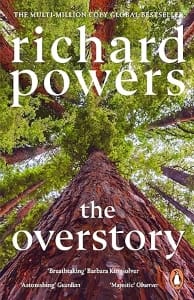
Alchemical Fantasy: Transmutation of the Soul
Alchemical Fantasy is transformation made myth. Rooted in mysticism, hermetic tradition, and symbolic spiritual change, this subgenre turns magic inward. It’s not just about turning lead into gold — it’s about turning suffering into revelation, the mundane into the divine. Think Fullmetal Alchemist, or The Golem and the Jinni by Helene Wecker, where the laws of transformation are sacred and bound to consequences.
Alchemy here is a philosophy. Magic is precise, structured, and deeply tied to identity. The protagonist often undergoes internal metamorphosis parallel to the magical systems they engage with — broken people rebuilt through mystical equations, dreams, and loss.
To write Alchemical Fantasy, draw from real-world mystic traditions: the Emerald Tablet, chakras, Jewish mysticism, Taoist internal alchemy. Create systems that are not just rules — but rites. Let your magic be symbolic of the soul’s journey, and your prose arcane and radiant.
Fantasy Western: Dust, Guns, and Grim Legends
Fantasy Westerns lace the tropes of the American frontier — lawless towns, gunslingers, and desert justice — with sorcery, spirits, or monstrous foes. Magic here feels like legend: a whisper around campfires, a hex in a whiskey bottle. Think of The Dark Tower by Stephen King, or Wake of Vultures by Lila Bowen.
This subgenre thrives on isolation and moral tension. Heroes are often drifters — cursed, chosen, or broken. Towns live on the edge of unknown wilds. Magic is as likely to damn as to save. There is grit, but also myth — a duel might summon thunder gods, or a train might run on demon hearts.
To write Fantasy Western, blend sparse, evocative prose with mythic undertones. Let your characters carry guilt like saddle bags. Show a world that’s raw, cruel, and filled with just enough wonder to keep hope flickering. And let magic be dangerous — like an unholstered pistol.
Arcanepunk: Neon Sigils and Magic Circuits
Arcanepunk is the gleaming fusion of magic and technology — a genre where spellcraft is integrated into the modern world like software, and wizards wear trench coats and carry enchanted USB drives. Think Arcane (Netflix), Shadowrun, or The Bartimaeus Trilogy by Jonathan Stroud with its bureaucratic magic system.
In Arcanepunk, spells may be programmed. Elementals might be stored in crystals or uploaded to networks. Urban architecture hums with wards, runes, and energy conduits. This is not merely Urban Fantasy — it’s a world where magical systems have become infrastructure, currency, and capital.
To write Arcanepunk, think like an engineer and dream like a mystic. Design systems that blend the arcane with the digital. Make your cities living circuits. Let the conflict be one of control vs chaos — technocracy vs wild magic. Style matters here — but so does the underlying metaphysics.
Theological Fantasy: Gods in the Gutter, Faith in the Flames
In Theological Fantasy, belief has weight — and consequence. This is a genre where deities walk, cults clash, and theology isn’t background color, but central fuel for plot and character. In stories like The Book of the New Sun by Gene Wolfe or The Poppy War by R.F. Kuang, divine power isn’t a distant abstraction — it invades, burns, uplifts, and ruins.
This subgenre allows writers to interrogate faith, morality, doctrine, and divine absence. What happens when a god goes silent? When belief becomes law? When miracles become weapons? The tension often lies in the disparity between institutional religion and personal spirituality, or between blind devotion and desperate apostasy. It is a genre ripe for exploring moral complexity: holy wars, prophetic delusion, saintly corruption.
The aesthetics of Theological Fantasy can range from gothic cathedrals laced with relics to wild-eyed prophets in bone deserts. Writers should craft pantheons with internal logic — not just aesthetics, but ideology. Let your characters wrestle with grace and guilt. Here, gods may be flawed, absent, or terrifyingly intimate — and faith is never without cost.
LitRPG and GameLit: When Narrative is a System and Stats Have Souls
Welcome to the grid, where magic has cooldowns, every sword has a name and a drop rate, and death might just mean respawn. LitRPG (Literary Role-Playing Game) and GameLit fuse the logic of video games with the emotional arcs of storytelling — character sheets meet character growth. At their core, these tales explore what happens when identity, morality, and fate are governed by rules — not social laws, but literal coded mechanics.
The protagonist might be trapped in a game (Sword Art Online), reincarnated into one (The Wandering Inn), or born into a world that simply runs on experience points (Awaken Online). But great LitRPG goes deeper than just dungeon loot. It wrestles with what it means to level up — how power changes us, how narrative structure can become a cage, and what morality means when quantified. Game worlds offer literal consequences for every action, and readers thrill at watching both character and player master the system.
For writers, balancing crunchy mechanics with emotional stakes is key. Worldbuilding here is algorithmic — skill trees, factions, crafting systems, AI logic. But beneath the numbers must lie heart. This is the only subgenre where spreadsheets and soul-searching go hand in hand — and the dungeon may just be a metaphor for depression.
Fantasy Noir: Smoke, Sorcery, and Moral Smoke Rings
Fantasy Noir is the cigarette-burned map of the fantasy world. Think trench coats over robes, detectives dealing with demons, magical crimes wrapped in moral grime. It takes the grit and fatalism of noir and dunks it in spell ink. The city is almost always a character: a crumbling skyline where corruption, curses, and conspiracies ooze through the cracks like urban mildew.
Imagine Raymond Chandler and China Miéville playing chess in a haunted jazz bar — that’s the vibe. In Glen Cook’s Garrett P.I. series or Ben Aaronovitch’s Rivers of London, the sleuth might have a wand instead of a revolver, but they still chase truth through blood and back alleys. Fantasy Noir thrives on tone — sultry, cynical, atmospheric as fog over cobblestone.
Writers here should pay attention to rhythm — both in dialogue and pacing. Noir is about moral ambiguity, broken systems, and the price of survival. Your protagonist probably isn’t a hero — but they might be the only one who cares. Mix magical worldbuilding with deadpan narration, and let every spell leave a scar.
Psychological Fantasy: The Mind is the Monster, or the Muse
In Psychological Fantasy, the real battleground is internal. Magic may be real, or imagined — either way, it reflects trauma, memory, madness, or identity fracture. The landscapes may be dreamscapes. The threats may wear the face of the protagonist’s own regrets. This subgenre probes the psyche with a scalpel of metaphor, where illusions have substance, and fantasy becomes a form of therapy — or torment.
Books like Gene Wolfe’s The Book of the New Sun or Mervyn Peake’s Gormenghast don’t just create fantasy worlds — they trap readers in minds that bend reality. Psychological Fantasy is thick with symbolism, unreliable narrators, and existential stakes. It often explores neurodivergence, grief, PTSD, or altered consciousness. A spell might be a suppressed memory. A villain might be an inner child. The monster may only exist because the hero needs it to.
For writers, this subgenre is permission to get weird — deeply, structurally weird. Blend surrealism with myth. Let dreams interrupt the plot. Trust metaphor over mechanics. Just don’t forget to anchor your story in emotional reality — otherwise, the reader gets lost in the labyrinth and never wants to come out.
Anthropomorphic Fantasy: Fur, Fang, and Kingdoms of Beasts
This is the genre where the animals rise — not just speaking, but ruling, rebelling, philosophizing. From the soft-edged sorrow of Watership Down to the political teeth of Redwall, Anthropomorphic Fantasy gives human traits to beasts not as a gimmick, but as a deep, symbolic maneuver. It allows writers to externalize instinct, culture, and power dynamics in striking ways. Predation becomes politics. Plumage becomes pride. A fox’s cunning or a bear’s strength can mean both biology and ideology.
This subgenre can lean pastoral or epic, satirical or elegiac. Brian Jacques built entire cultures from species archetypes, while Richard Adams infused rabbit society with mythology, language, and fear. And modern examples, like The Book of Night with Moon by Diane Duane, show how these animal protagonists can also navigate urban magical realism.
The key for writers is to go beyond cuteness. Treat your animal civilizations seriously. Create believable ecologies, hierarchies, rituals, and taboos. Explore species-based bias, folklore, and evolution. In this world, a war over water rights between herons and crocodiles can hold more emotional weight than a thousand human battles. Anthropomorphism, when done well, strips humanity to its bones and shows us who we are — without ever showing a human face.
Domestic Fantasy: Magic in the Everyday, Wonder in the Ordinary
Domestic Fantasy whispers to readers that enchantment isn’t just in faraway kingdoms or on battlefield moons — it’s in the mundane moments of daily life. It folds magic into kitchens, gardens, neighborhoods, and families. This subgenre focuses on the intimate: relationships, routines, and the small mysteries that flicker beneath the surface of the ordinary.
Think Practical Magic by Alice Hoffman or The House in the Cerulean Sea by TJ Klune — stories where spells might fix broken dishes or soothe aching hearts, and the greatest magic is kindness, acceptance, or understanding. The tone is often warm, cozy, and quietly profound, but can ripple with unexpected tension or grief.
For writers, Domestic Fantasy is a space to explore character depth, subtle worldbuilding, and emotional resonance. Magic can be metaphor — for healing, trauma, or connection — or literal. The stakes aren’t always epic battles but the survival of love and hope within fragile lives. It invites readers to believe that the extraordinary is never far from home.
Asian Fantasy: A Vast Tapestry of Spirit, Myth, and Cultural Legacy
Asian Fantasy is not a monolith but a sprawling mosaic, each piece shaped by centuries of unique histories, philosophies, religions, and storytelling traditions. The continent’s vastness and diversity mean that Asian Fantasy encompasses a wide range of tones, themes, and magical systems — from the ethereal immortal cultivators of China to the shadowy yokai of Japan, from the divine epics of India to the shamanistic spirits of Siberia and Mongolia. Each regional tradition brings its own emotional and narrative pulse, creating an expansive playground for writers who wish to immerse their stories in cultural richness and mythic depth.
Chinese Fantasy, particularly the xianxia and wuxia traditions, dominates much of what Western readers recognize as “Asian fantasy,” but even within China, there’s immense variety. Xianxia stories focus on the pursuit of immortality and spiritual cultivation, inspired by Daoism and Buddhist philosophies, where practitioners undergo grueling physical and spiritual trials to ascend through heavenly realms. These tales often weave elaborate cosmologies with gods, demons, and elemental spirits, creating a universe where mortal struggle intersects with divine machinations. A hallmark is the intricate martial arts combined with magical qi manipulation—something like The Untamed or Coiling Dragon illustrate. In contrast, wuxia tales are more grounded in the human world, emphasizing heroic swordsmen, honor codes, and earthly adventures but still suffused with almost supernatural prowess. Jin Yong’s novels remain iconic here, blending history, romance, and martial myth.
Japanese Fantasy is deeply entwined with kami (spirit) worship, yokai folklore, and Shinto-Buddhist cosmologies. Unlike the lofty immortals of Chinese fantasy, Japanese fantasy often portrays spirits as capricious and immanent forces that dwell in natural elements — forests, rivers, mountains — or in everyday objects. This results in narratives rich with ambiguity, where the line between human and spirit blurs. The haunting beauty of Studio Ghibli films like Princess Mononoke or the eerie world of Natsume’s Book of Friends exemplify this. The yokai— supernatural creatures ranging from mischievous to malevolent — are central, embodying human fears, desires, and moral lessons. Samurai epics, such as Shigurui or Blade of the Immortal, combine brutal realism with spiritual themes of honor, death, and redemption.
Moving south, Indian Fantasy draws from vast epics like the Mahabharata and Ramayana, replete with gods, avatars, demons (asuras), and complex cosmic order (dharma). The emotional and philosophical weight of Indian fantasy is immense, often concerned with fate, karma, dharma, and the cyclical nature of time. These epics feature heroes wrestling not only with external enemies but with profound moral dilemmas and cosmic duties. Contemporary Indian fantasy writers blend these mythic roots with modern themes—think Amish Tripathi’s Shiva Trilogy reimagining gods as epic heroes, or Samit Basu’s GameWorld Trilogy, which mixes traditional myth with high fantasy adventure. Indian fantasy is also deeply poetic, rooted in Sanskrit shlokas and classical literature, often reflecting the metaphysical quest for self-realization.
In Korean Fantasy, there is a strong tradition of shamanism (muism) and folklore, alongside influences from Confucian and Buddhist thought. Korean fantasy often incorporates ghost stories (gwisin) and tales of spirits who linger in liminal spaces. The narrative mood can be somber, blending tragedy and resilience, as seen in modern webtoons and dramas like Guardian: The Lonely and Great God (Goblin), where the supernatural intimately intersects with human emotion and fate. The motif of reincarnation and intertwined destinies frequently appears, as well as explorations of social hierarchy and historical tensions. Korean fantasy media frequently mix historical settings with magical realism, creating worlds where spirits and humans coexist but are often divided by unspoken pain or unfulfilled promises.
Southeast Asian Fantasy—from Thailand, Indonesia, Vietnam, and the Philippines—presents an immensely rich blend of animism, Hindu-Buddhist influences, and local folklore. For example, Indonesian fantasy draws on wayang kulit (shadow puppet theater) stories, where gods and heroes battle in intricate moral dramas, while Filipino fantasy often features aswangs (shape-shifting creatures) and diwatas (nature spirits), layered with indigenous beliefs about ancestral spirits and the unseen world. Southeast Asian fantasy often emphasizes the coexistence of the visible and invisible, the sacred and profane, with an overarching theme of balance between humans, spirits, and nature. The Philippines’ Alamat legends or Thailand’s phi (ghost) stories bring a vibrant, sometimes eerie energy to the subgenre, with lush jungle settings and spiritual realms bleeding into everyday life. These stories often explore colonial histories, indigenous survival, and the syncretism of religious practices, lending a deeply political and emotional resonance.
Mongolian and Siberian Fantasy channels the shamanistic practices and nomadic traditions of the steppe, where shamans commune with ancestral spirits and elemental forces. The landscape here—endless grasslands, harsh winters—is itself a character, shaping narratives of endurance, transformation, and spiritual journeying. These tales tend to emphasize cyclical time, harmony with nature, and the thin veil between human and spirit worlds. Mythic creatures like the tengri (sky gods) and animal spirits serve as guides or adversaries, reflecting the deep respect for animals and the land central to these cultures.
Each regional variant of Asian Fantasy carries distinct concepts — whether it’s the cultivation of qi and spiritual ascension in Chinese xianxia, the restless spirits and blurred realities of Japanese yokai stories, the cosmic battles and moral complexity of Indian epics, or the deep intertwining of shamanistic rites and ancestral veneration in Korean and Mongolian tales. These differences create a palette of emotional and thematic possibilities: from introspective quests for enlightenment, to brutal power struggles, to haunting explorations of identity and belonging.
For writers, embracing Asian Fantasy means diving beyond surface-level exoticism into the heart of these traditions—understanding their spiritual philosophies, cultural values, and storytelling structures. It means respecting sacred narratives while innovating new myths for contemporary readers. It means weaving worlds where dragons don’t just breathe fire but embody cosmic forces, where heroes’ swords cleave not just flesh but the fabric of fate, where ghosts whisper truths about mortality and memory.
Some notable works bringing Asian Fantasy to global audiences include The Poppy War by R.F. Kuang, which blends Chinese history and shamanism with brutal war epic; Ken Liu’s Grace of Kings, inspired by Chinese dynastic sagas; and Under the Pendulum Sun by Jeannette Ng, which reimagines missionary-era fantasy with a distinctly Asian perspective. Anime and manga also bring these stories to life with rich visual storytelling that captures both the ethereal beauty and terrifying power of Asian myth.
In sum, Asian Fantasy is a vast, ever-expanding universe where every culture contributes its own stars to a sky of spirits, warriors, gods, and magic. It challenges writers to think mythically, write poetically, and honor the sacred rhythms that have shaped human imagination for millennia.
African Fantasy: A Vibrant Cosmos of Ancestors, Spirits, and Sacred Narratives
African Fantasy pulses with the heartbeat of a continent whose stories have been told around fires for millennia—stories steeped in ancestral reverence, spirit worlds, trickster gods, and the profound interconnection between humans, nature, and the divine. Far from a single tradition, African Fantasy unfolds as a rich tapestry woven from the diverse cultures, languages, and mythologies across the continent’s vast geography—from the Sahel to the Savannah, from the jungles of Central Africa to the coasts and deserts.
At its core, African Fantasy often centers on orature—the oral storytelling traditions that passed wisdom, history, and morality from one generation to the next. These stories rarely separate the spiritual from the everyday; rather, the living world is deeply entangled with ancestors, spirits, and forces of nature. The spirits are not distant gods but present, active, and often unpredictable entities who shape human destiny. This worldview permeates African Fantasy’s themes: community and kinship, the sacredness of land and animals, the power of transformation, and the delicate balance between order and chaos.
West African Fantasy draws heavily on the rich pantheon of gods and spirits from Yoruba, Akan, and Fon traditions, among others. The Yoruba Orisha—divine beings who govern natural forces and human endeavors—are central figures in many stories. These deities embody complex personalities and moral ambiguities, far from simplistic good-or-evil archetypes. For instance, Ogun is both a god of war and a patron of blacksmiths and technology, symbolizing creation through destruction. African Fantasy inspired by Yoruba myth, like Tomi Adeyemi’s Children of Blood and Bone, blends magic systems rooted in divination, ancestral power, and elemental forces with urgent social themes of oppression, identity, and revolution.
Trickster figures such as Anansi the spider from Akan folklore are another key component. Anansi stories are playful, subversive, and layered with moral lessons. They show how wit and cunning often triumph over brute strength, serving as metaphors for resilience and survival. The trickster’s fluidity—often shape-shifting and boundary-breaking—reflects a broader African Fantasy motif of transformation and liminality, where characters and spirits traverse thresholds between worlds.
East African Fantasy often draws on Swahili coastal cultures and their melding of African, Arab, and Indian influences. Here, fantasy narratives frequently explore the mystical powers of the sea and oceanic spirits, djinn-like beings, and enchanted islands. The Swahili oral tradition includes stories of powerful sultans, magical artifacts, and sacred talismans (jujus), all woven into expansive trade networks and spiritual cosmologies. This region’s fantasy leans into the themes of diaspora, cultural hybridity, and the sea as a realm of both peril and possibility, exemplified in modern literature and film exploring the Indian Ocean’s mythic geography.
Central African Fantasy, influenced by the beliefs of the Kongo, Bakongo, and Bantu peoples, often emphasizes ancestral veneration and the intricate spirit world known as Kalûnga. In these cosmologies, life, death, and rebirth form a continuous cycle where spirits influence the living. Magical practices include nkisi (spirit-infused objects) that can heal, protect, or curse. The motif of the powerful magical artifact resonates here deeply—imagine enchanted relics imbued with the essence of ancestors, carrying the weight of history and responsibility. Writers inspired by these traditions explore themes of colonial trauma, resilience, and the reawakening of ancestral power.
Southern African Fantasy pulls from Zulu, Xhosa, and San storytelling, often grounded in shamanistic traditions and powerful animal symbolism. The San peoples’ trance dances and rock art provide a deep spiritual backdrop for stories about shape-shifting, spirit journeys, and the hidden magic of the land. In Zulu and Xhosa myths, heroic figures often possess extraordinary powers granted by ancestral spirits, confronting forces that threaten community harmony. This subgenre often interrogates the tension between modernity and tradition, with narratives that explore how ancient wisdom endures in a rapidly changing world.
African Fantasy is also characterized by its strong emphasis on oral poetry, song, and performance, making rhythm and cadence integral to the narrative experience. These stories are not merely read but performed, chanted, and enacted—an aspect that modern writers and creators often seek to capture through lyrical prose, dialogue, and immersive worldbuilding.
Modern African fantasy literature and media are expanding this rich tradition, blending myth with contemporary social and political realities. Authors like Nnedi Okorafor fuse science fiction and fantasy with African folklore, creating worlds where technology and magic coexist, and where identity and heritage play central roles. Works such as Who Fears Death and Binti bring powerful voices exploring themes of gender, trauma, and empowerment rooted in African cultural contexts.
Films and television series increasingly draw on African mythology to challenge Eurocentric fantasy tropes and assert the continent’s imaginative power. For example, Marvel’s Black Panther creates a pan-African fantasy realm that reimagines African cultures through Afrofuturism—a futuristic, technologically advanced society deeply connected to ancestral roots and spiritual forces.
In summary, African Fantasy is a vibrant, living tradition that resists simple categorization. It is a genre of profound spiritual depth, moral complexity, and cultural resilience. It invites readers and writers to experience a world where the past and present, the human and divine, the natural and supernatural, continuously entwine in a dance of magic, memory, and meaning.
Indigenous Fantasy: Storytelling as Sacred Connection to Land, Ancestors, and Spirit
Indigenous Fantasy emerges from some of the oldest continuous storytelling traditions on Earth, where myths, legends, and oral histories have been passed down for thousands of years, often without written form but with incredible detail, emotional power, and sacred significance. Unlike many Western fantasies that separate “magic” as a system or power, Indigenous Fantasy portrays a world inherently alive and imbued with spirit—where animals, plants, mountains, rivers, and the weather are conscious beings with agency and wisdom. The land itself is a character, teacher, and ancestral relative.
For many Indigenous cultures, storytelling is a ceremony and a form of survival, preserving history, law, morality, and identity. These stories are often cyclical, emphasizing harmony, balance, and respect. The protagonists might be tricksters, shape-shifters, cultural heroes, or spirit guides, and their quests often involve restoring harmony between humans, the environment, and the spirit world.
North American Indigenous Fantasy is incredibly diverse, reflecting hundreds of nations with distinct languages and cosmologies. Many stories center on trickster figures such as Coyote, Raven, or Nanabozho, who embody both wisdom and folly, disrupting order to create change or teach lessons. Unlike the neat morality of many Western tales, these tricksters are ambiguous, powerful, and deeply human—reflecting the complex realities of existence.
Beyond tricksters, stories often feature shape-shifters who can transform into animals or elements, symbolizing fluid identity and the deep bond between human and nonhuman worlds. For example, many Plains tribes tell of the Thunderbird, a mighty spirit bird controlling the weather, whose appearances are awe-inspiring and sometimes terrifying.
A defining theme in Indigenous Fantasy is the sacredness of land and place. The geography itself holds memory and power—specific mountains, rivers, or forests are living beings with stories to tell. This contrasts with fantasy worlds that are purely invented; Indigenous Fantasy often layers magical reality on top of actual landscapes, demanding readers consider the importance of place, stewardship, and history.
This deeply rooted connection to land and ancestors is central to authors like Rebecca Roanhorse, whose novel Trail of Lightning blends Navajo (Diné) mythology with a post-apocalyptic world, where gods walk among humans and ancient magic is real but dangerous. Roanhorse’s work captures the tension between survival, cultural resilience, and the impacts of colonialism, all through the lens of Indigenous spiritual worldview.
Australian Indigenous Fantasy brings the Dreamtime stories of the Aboriginal peoples to the forefront, revealing a cosmos where time is not linear but layered, where ancestral beings created the land and set moral laws in motion. These ancestral beings—often shape-shifting, trickster-like figures—formed the natural world through song and ceremony. The land itself holds the stories and laws of the people, and journeys across the landscape are simultaneously physical, spiritual, and temporal.
In Australian Indigenous Fantasy, there is a profound respect for the invisible forces—spirits, totems, and the Dreaming—that govern the interrelationship between humans, animals, and nature. Contemporary Indigenous writers and artists work to preserve and revitalize these stories, often using fantasy elements to explore themes of cultural survival, identity, and reconciliation with colonial histories.
Indigenous Fantasy from the Arctic and Subarctic regions brings forward stories from Inuit, Sámi, and other northern peoples, where survival against harsh natural elements is intertwined with spiritual encounters. Here, stories of Sedna (the sea goddess who controls sea creatures) or shape-shifting shamans speak to the balance between humanity and the animal world, the fragility of ecosystems, and the sacredness of water and ice. The fantasy is often stark, elemental, and filled with quiet reverence and mystery.
Themes of healing and reclamation are common threads across Indigenous Fantasy globally. Many stories confront trauma from colonization, cultural erasure, and environmental destruction. Magic and spiritual power are portrayed not just as wondrous but as deeply tied to ancestral knowledge and responsibility. Healing comes through reconnecting with land, traditions, and community, rather than through conquest or dominance.
For writers, Indigenous Fantasy offers a profoundly different paradigm than much of Western fantasy. The magic isn’t a “system” to be mastered but a living relationship. Characters aren’t solitary heroes but part of a web of life that includes ancestors, animals, spirits, and future generations. Conflict often involves restoring balance rather than defeating a singular villain. The narrative voice frequently blends myth, history, and present-day struggles, weaving them into a continuum.
This subgenre demands sensitivity and respect for the cultures it draws from, and increasingly Indigenous creators themselves are leading the storytelling, reclaiming their narratives and reshaping fantasy on their own terms. As a reader or writer approaching Indigenous Fantasy, it’s essential to honor this sacred origin and to understand these stories not just as entertainment, but as living legacies.
Middle Eastern Fantasy: The Sands of Time and the Magic of Storytelling
Middle Eastern Fantasy draws heavily on the rich wellspring of mythology, folklore, and classical literature from across a vast region encompassing the Arab world, Persia (modern-day Iran), the Levant, and beyond. This subgenre channels the lyrical grandeur of One Thousand and One Nights (Arabian Nights), the epic poetry of Ferdowsi’s Shahnameh, and the spiritual mysticism of Sufi tradition, combining them into narratives that are as emotionally resonant as they are fantastical.
At its core, Middle Eastern Fantasy thrives on themes of fate and free will, honor and betrayal, and the interplay of light and shadow—both literally and metaphorically. It’s a world where vast deserts hide lost cities of gold, caravans traverse treacherous trade routes, and ancient curses and blessings echo through generations. Djinn (genies), creatures of smokeless fire bound by ancient magic, feature prominently as tricksters, allies, or formidable adversaries—mysterious forces that challenge and reshape the fates of mortals. Unlike the Western genie trope that focuses on wish granting, the djinn in Middle Eastern Fantasy embody capricious power and moral ambiguity, capable of great kindness or devastating wrath.
The narrative style here is often poetic and richly descriptive, evoking the scents of spices, the shimmer of silks, and the haunting call to prayer at dusk. Settings are lush and opulent yet layered with danger: labyrinthine palaces rife with court intrigue, sacred mountains where mystics seek enlightenment, and sprawling markets where secret knowledge and forbidden magic change hands beneath glittering lantern light.
Persian influence brings its own majestic flavor, notably through tales like Shahnameh, a sweeping epic of kings, heroes, and cosmic battles that has shaped the heroic ideal in Persian culture. These stories emphasize honor, sacrifice, and the cyclical nature of time, with heroes facing overwhelming odds against monstrous foes and tyrannical rulers. The Persian cosmology’s deep focus on dualities—light and darkness, good and evil, order and chaos—imbues Middle Eastern Fantasy with a philosophical richness that challenges simplistic moral binaries.
Sufi mysticism also profoundly colors this fantasy space, exploring themes of spiritual questing and inner transformation. Here, magic isn’t just external power but a reflection of divine truth and enlightenment, weaving an intricate connection between human love, divine mystery, and cosmic balance. The hero’s journey might involve not only physical battles but transcending ego and embracing the unity of existence.
Authors like G. Willow Wilson with Alif the Unseen and Salman Rushdie’s magical realist works draw from these traditions to create modern Middle Eastern Fantasy that tackles contemporary issues — from political oppression to identity and exile — while preserving the mystical pulse of the ancient world. These stories often juxtapose the everyday with the supernatural, revealing a world where the boundary between reality and myth is porous and shimmering.
Middle Eastern Fantasy also excels in portraying complex social and political dynamics: tribal loyalties, imperial intrigues, religious tensions, and gender roles that shape characters’ choices and conflicts. Female protagonists may navigate patriarchal courts with wit and sorcery, while assassins and scholars alike pursue secret knowledge hidden in dusty scrolls and enchanted artifacts. The rich visual and cultural detail—ornate textiles, calligraphy, intricate tile work—grounds the fantastical in a sensory reality that enchants readers.
For writers, Middle Eastern Fantasy offers a vast palette to explore questions of destiny, identity, and transformation against a backdrop of sprawling landscapes and intricate cultural tapestries. Worldbuilding here is an act of homage and imagination, blending historical authenticity with mythic invention. Characters often wrestle with the legacy of empire, the weight of tradition, and the seductive allure of forbidden magic.
Unlike many Western fantasies that emphasize conquest or rebellion, Middle Eastern Fantasy often focuses on survival, negotiation, and the preservation of honor and knowledge. Magic, while potent, is seldom without cost or consequence, reinforcing the idea that power demands responsibility and humility. The narratives tend to celebrate the power of storytelling itself—echoing the frame story of Scheherazade, who saves her life with tales that teach, enchant, and transform.
In sum, Middle Eastern Fantasy is a genre of shimmering contrasts: the harshness of desert winds and the softness of moonlight on silk, the cruelty of political scheming and the tenderness of mystical love, the brutality of fate and the hope of transcendence. It invites readers to wander ancient bazaars, listen to the whispers of djinn, and journey across the infinite sands of time and spirit.
Slavic Fantasy: Forests of Myth, Shadow, and the Soul’s Edge
Slavic Fantasy draws its lifeblood from the dense woodlands, vast steppes, and icy rivers of Eastern Europe, where old gods once walked and still whisper through the trees. It taps into the mythologies of Russia, Ukraine, Poland, the Czech Republic, Slovakia, the Balkans, and the Baltic states, weaving together pagan deities, household spirits, and legendary heroes with the textured history of a region shaped by invasions, shifting borders, and resilience in the face of hardship.
At the heart of Slavic Fantasy lies a profound connection to nature and the supernatural world, where magic is wild, untamed, and deeply ambivalent. Unlike the orderly systems of High Fantasy, the magic here is often raw and unpredictable—rooted in the old ways of shamanism, animism, and folk rituals passed down through generations. The forest itself is a character: a living, breathing entity filled with leshy (forest spirits), rusalka (water nymphs), and domovoi (household guardians) whose moods shift with the seasons and human respect or neglect.
This subgenre explores themes of liminality—the thresholds between life and death, the seen and unseen, civilization and wilderness. Slavic Fantasy frequently blurs these lines, casting humans as vulnerable players caught between capricious deities and eldritch forces beyond comprehension. The mood is often melancholic and eerie, mixing beauty with decay, hope with fatalism, and human warmth with cold isolation. It is a landscape where village superstition and ancient magic intersect, where a simple folk tale can hide a cruel warning or a profound truth.
Iconic figures such as Baba Yaga, the enigmatic witch who lives in a hut on chicken legs, embody the subgenre’s paradoxes. She is a guardian of threshold knowledge and a fearsome adversary, neither wholly evil nor good, symbolizing the ambiguity of power and the mysterious forces that govern life. Likewise, the Morozko (Winter Father) and Koschei the Deathless illustrate the harshness and persistence of nature and death, recurring motifs throughout Slavic mythic storytelling.
The stories often involve quests or rites of passage entwined with the cycles of nature and the spiritual world. Heroes are not always triumphant knights but sometimes reluctant peasants, cunning tricksters, or cursed souls who must outwit or bargain with supernatural beings to survive or protect their families. These characters wrestle with fatalistic forces yet demonstrate human resilience, wit, and the desire for redemption or transformation.
Slavic Fantasy is notable for its groundedness in folk tradition and oral storytelling. Its narratives often employ a simple yet lyrical style that mirrors the cadence of traditional tales, with repeated motifs, symbolic objects (like magical swords, enchanted birds, or protective talismans), and a circular sense of time where past and present echo into each other. This cyclical worldview contrasts with Western linear narratives and invites readers to contemplate the eternal return, the persistence of the past in the present, and the ongoing dance between human frailty and cosmic mystery.
Modern Slavic Fantasy authors such as Maria Semenova, Andrzej Sapkowski, and recent Russian and Ukrainian voices blend this mythic heritage with contemporary concerns. Sapkowski’s The Witcher series, perhaps the most globally recognized example, merges Slavic folklore with gritty realism, exploring themes of otherness, prejudice, and moral ambiguity within a brutal, politically complex world. The protagonist Geralt is a mutant monster hunter, a liminal figure embodying the tensions between humanity and monstrosity, order and chaos.
Beyond The Witcher, Slavic Fantasy often incorporates elements of historical fantasy, reflecting the region’s turbulent history of empire, war, and cultural crossroads. These stories grapple with the scars of conquest and the resilience of identity, often foregrounding folk customs and the tension between paganism and Christianity. The collision of ancient beliefs and imposed religion adds layers of spiritual conflict and cultural nostalgia, enriching the emotional landscape.
Writers crafting Slavic Fantasy must immerse themselves not only in mythic lore but also in the cultural psychology of Eastern Europe—its melancholic beauty, dark humor, and a worldview that accepts suffering as part of existence yet finds glimmers of hope in endurance and community. The landscapes must feel both haunting and alive, the magic ancient but personal, and the characters deeply human amid the shadows of gods and monsters.
In sum, Slavic Fantasy invites readers into a world where the forest never forgets, where every river holds a story, and where the line between hero and villain is as shifting as winter ice. It is a genre of mystery and memory, of raw elemental power and fragile humanity—a genre that asks us to listen closely to the whispers carried on the wind through birch trees and broken villages, and to find wonder in the darkness as much as the light.
Greek Fantasy: The Loom of Fate, Gods Among Men, and Heroic Tragedy
Greek Fantasy channels the rich and layered tapestry of ancient Greek mythology, philosophy, and drama, creating narratives that pulse with the grandeur of Olympus and the grit of mortal struggle. This subgenre is steeped in a world where the divine and human realms are intertwined, where gods like Zeus, Athena, and Hades interfere in human affairs with capricious whims and devastating consequences. Here, myths are not static relics but living, breathing stories that shape identity, destiny, and morality.
At its core, Greek Fantasy grapples with the inexorable concept of fate—a force that governs all, often beyond even the gods’ control. This tension between free will and destiny creates a profound emotional and philosophical tension in Greek-inspired stories. Heroes such as Achilles, Odysseus, and Heracles are defined not just by their feats but by how they confront or accept their fates, often with tragic consequences. Their journeys explore timeless themes of hubris, honor, vengeance, and redemption, making Greek Fantasy a fertile ground for stories that probe the human condition at its most vulnerable and heroic.
Unlike many modern fantasy settings where magic is systematized, Greek Fantasy’s supernatural elements are often personified in gods, spirits, and monsters that embody natural and psychological forces. The Furies represent relentless guilt and vengeance; the Sirens symbolize dangerous temptation; the Minotaur embodies the monstrous consequences of human folly. These mythic creatures and divine beings are not mere obstacles but symbolic extensions of the themes driving the narrative, enriching stories with layers of meaning and emotional depth.
The emotional tone of Greek Fantasy frequently carries a tragic grandeur, mirroring the structure of classical Greek drama. Characters are larger than life yet deeply flawed, their virtues and vices magnified against a backdrop of divine intrigue and cosmic justice. The chorus-like narration or reflections, common in Greek tragedy, inspire a heightened sense of collective human fate and moral reflection, inviting readers to ponder profound questions about justice, suffering, and the nature of existence itself.
Greek Fantasy also delves deeply into the concept of arete—excellence or virtue—challenging characters to strive for greatness while facing their limitations. Whether it’s the warrior’s valor, the poet’s wisdom, or the statesman’s prudence, these virtues are celebrated but always shadowed by the possibility of downfall. This duality creates complex emotional stakes, where triumph and tragedy are often inseparable, and where glory may lead to destruction as surely as cowardice leads to shame.
A hallmark of Greek Fantasy is its vivid, immersive settings drawn from the ancient Mediterranean world—the sun-drenched shores of the Aegean, the labyrinthine streets of Athens, or the mysterious caves of the underworld. Writers often blend historical detail with mythic imagination, weaving in the philosophies, politics, and daily life of ancient Greece to create worlds that feel both grandly mythic and palpably real. Temples, oracles, and festivals form crucial narrative touchstones where divine and mortal worlds intersect.
Modern adaptations and reimaginings of Greek Fantasy, like Madeline Miller’s Circe and The Song of Achilles or Rick Riordan’s Percy Jackson series, bring these myths into contemporary light, exploring identity, power, and trauma through diverse lenses. Miller’s work, for example, reclaims marginalized perspectives—like that of the witch Circe—inviting readers to reconsider the myths from feminist and psychological viewpoints. Meanwhile, Riordan’s urban fantasy spin transforms ancient deities and monsters into accessible metaphors for modern adolescence and cultural identity, broadening the subgenre’s appeal.
For writers, Greek Fantasy offers a rich palette of narrative tools: the tension of prophecy and free will, the interplay of divine intervention and human agency, and the exploration of moral ambiguity within epic, often tragic frameworks. The subgenre encourages the use of symbolism, allegory, and layered storytelling techniques that echo the poetic and dramatic forms of antiquity. Incorporating elements like oracles’ riddles, epic similes, and moral dilemmas can add authenticity and depth, inviting readers into a world where every action reverberates through both mortal and immortal realms.
Greek Fantasy’s emotional power lies in its ability to connect the timeless and universal—our struggles with identity, fate, and meaning—with the dazzling spectacle of myth. It invites readers to witness the glory and downfall of heroes, the caprices of gods, and the enduring question of what it means to be human in a cosmos that is at once ordered and chaotic, merciless and beautiful.
In sum, Greek Fantasy is not merely a revival of ancient tales but a vibrant, multifaceted genre that bridges history, myth, and philosophy. It challenges writers to craft stories that are epic in scope yet intimate in emotional resonance, narratives that echo with the footsteps of heroes and gods across the millennia, and that ask readers to face the eternal dance of fate, freedom, and consequence beneath the ever-watchful eyes of Olympus.
Fantasy Genre Mastery Homework: “Wielding the Worldsmith’s Quill”
Objective: To deepen your understanding of fantasy subgenres, uncover cultural richness, and ignite your emotional connection with the kind of stories you want to tell.
PART I — The Cartography of Fantasy: Map Your Genre Affinity
Instructions:
Read through the fantasy subgenres we’ve explored so far (e.g., High Fantasy, Grimdark, Mythpunk, Asian Fantasy, Slavic Fantasy, etc.).
Choose 3 subgenres that spark something in you — excitement, curiosity, confusion, even fear.
For each, write a 500-word reflection that answers:
What draws you to (or repels you from) this subgenre?
Which stories, shows, or myths have you experienced that fall into this category?
If you were forced to write a story in this subgenre, what would your version look like?
How could you twist it to make it feel more personal?
PART II — Mythic Echoes: Cultural Fantasy Deep Dive
Instructions:
Choose one culture-specific fantasy branch (e.g., Japanese, Greek, Slavic, Indigenous, African, Indian, Persian, Mesoamerican, etc.).
Research that culture’s mythological systems, monsters, cosmology, and storytelling traditions.
Answer the following in 800-1000 words:
What are the recurring themes in this culture’s stories? (e.g., duty, transformation, nature, fate)
How do they portray gods, spirits, or magical beings?
What is the relationship between mortals and the supernatural?
What modern media (books, films, anime, etc.) adapt these themes well? What feels missing?
Bonus Challenge:
Include a short fictional vignette (300-500 words) inspired by something from that culture’s mythos — a deity, a legendary hero, a folkloric setting, or a creature.
PART III — Alchemy of the Self: Your Inner Fantasy World
Instructions:
Write a 1,000-word personal essay called “The Fantasy That Lives In Me.”
Reflect on:
What kind of fantasy stories did you love growing up?
What archetypes (the Trickster, the Exile, the Hero, the Witch, the Oracle, etc.) do you most identify with?
When did a fantasy story change your life or the way you see the world?
If you could live in any type of fantasy world, what would it look like — and who would you be there?
End the essay with a fantasy story idea that only you could write. Something that blends your truth with the unreal.
PART IV — Creative Artifact: The First Relic of Your World
Instructions:
Using what you’ve learned from genre research and personal reflection, create one concrete artifact from a fantasy world you might someday write.
This could be a myth fragment, a magical relic’s origin story, a song sung by pilgrims, a map, a prayer, a tax ledger from a cursed village, or a dream journal of a godling.
It should be no more than 800 words but must feel real, like it was plucked from another reality.
Bonus Inspiration Prompts:
A relic from a fallen culture that once battled dragons in silence.
A recipe passed down by witches that causes time to rewind a single hour.
The bedtime rhyme that warns children of the forest’s second moon.
OPTIONAL BONUS QUEST — Design Your Own Subgenre
Instructions:
Take inspiration from any real-world cultural aesthetic, emotional theme, scientific theory, or philosophical idea.
Create and name an entirely new fantasy subgenre.
Define its typical tone, themes, world rules, types of characters, magic systems, and narrative scope.
Pitch it like you’re launching a new literary movement.
Discover more from Ge-erdy Verse
Subscribe to get the latest posts sent to your email.

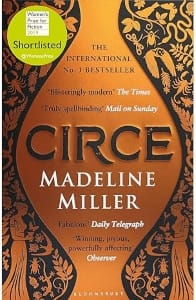
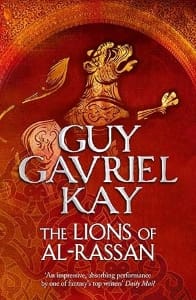
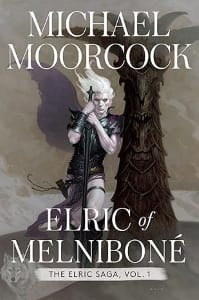
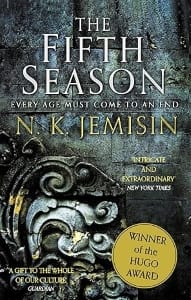

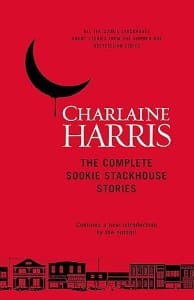
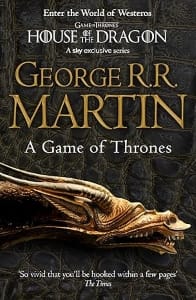
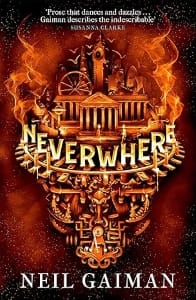
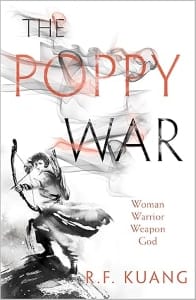
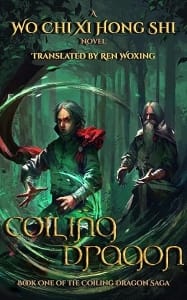
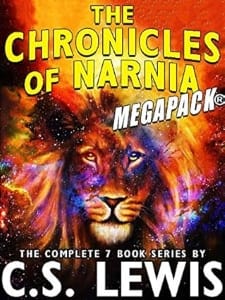
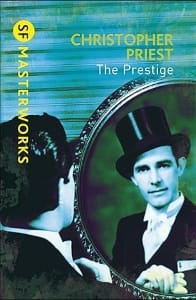

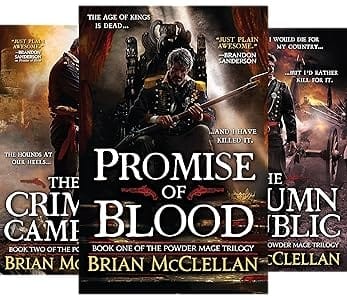
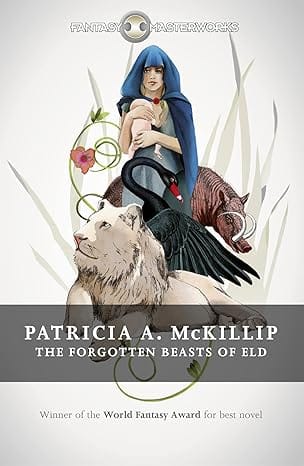
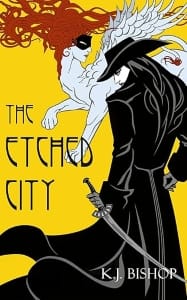
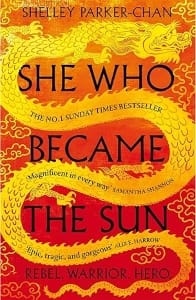
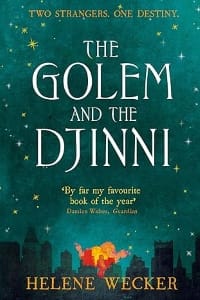
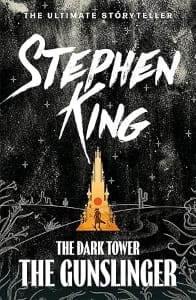
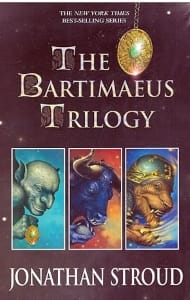
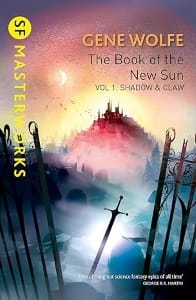
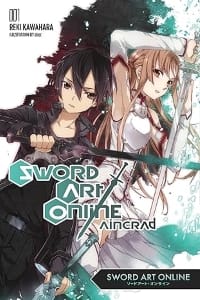
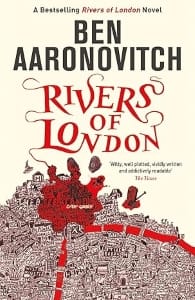
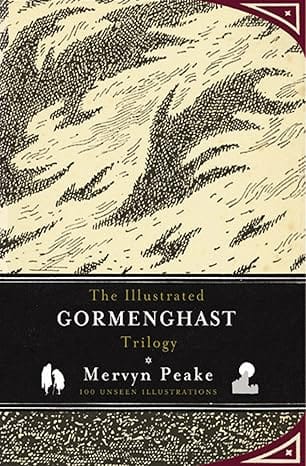
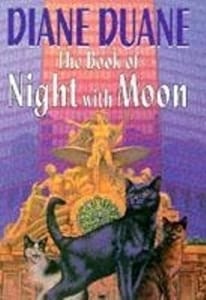

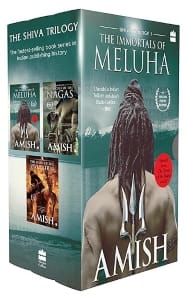
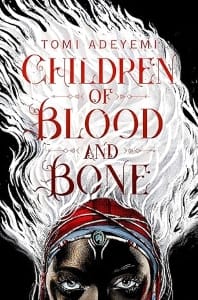
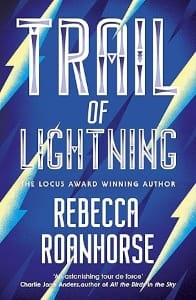
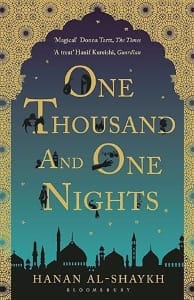

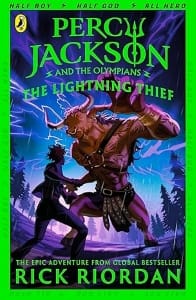

May 17, 2025 @ 4:16 pm
naturally like your web site however you need to take a look at the spelling on several of your posts. A number of them are rife with spelling problems and I find it very bothersome to tell the truth on the other hand I will surely come again again.
May 17, 2025 @ 8:50 pm
Sure, we’ll go through our posts to weed out the mistakes!!!
May 17, 2025 @ 4:37 pm
Good post! We will be linking to this particularly great post on our site. Keep up the great writing
May 17, 2025 @ 8:49 pm
Thanks a lot!!! We’ll be posting more, so stay tuned!
May 17, 2025 @ 4:58 pm
I appreciate you sharing this blog post. Thanks Again. Cool.
May 17, 2025 @ 8:49 pm
Welcome! Stay tuned for more posts like this!